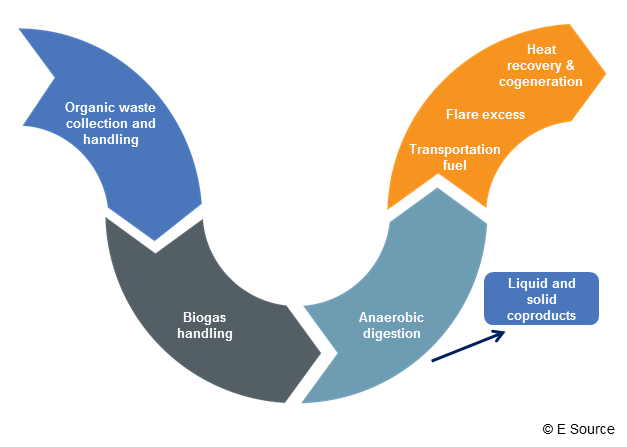

To reduce greenhouse gas emissions and the risk of pollution to waterways, organic waste can be removed and used to produce biogas, a renewable source of energy. Given equal amounts of methane and carbon dioxide, methane will absorb 86 times more heat in 20 years than carbon dioxide. Methane is a powerful greenhouse gas that traps heat in the atmosphere more efficiently than carbon dioxide. Organic wastes also generate large amounts of methane as they decompose. Municipal water utilities treat drinking water to remove nitrates, but it is costly to do so. Drinking water with high levels of nitrates is linked to hyperthyroidism and blue-baby syndrome. Excess nutrients cause algal blooms, harm wildlife, and infect drinking water. Pathogens, chemicals, antibiotics, and nutrients present in wastes can contaminate surface and ground waters through runoff or by leaching into soils. When these wastes are improperly managed, they pose a significant risk to the environment and public health. While source reduction and feeding the hungry are necessary priorities for reducing needless food waste, organic wastes are numerous and extend to non-edible sources, including livestock manure, agriculture wastes, waste water, and inedible food wastes. The United States produces more than 70 million tons of organic waste each year. Environment & Energy Congressional Round-Up.House and Senate Renewable Energy & Energy Efficiency Caucuses.Congressional Renewable Energy and Energy Efficiency EXPO.

National Security and Energy Independence.


 0 kommentar(er)
0 kommentar(er)
